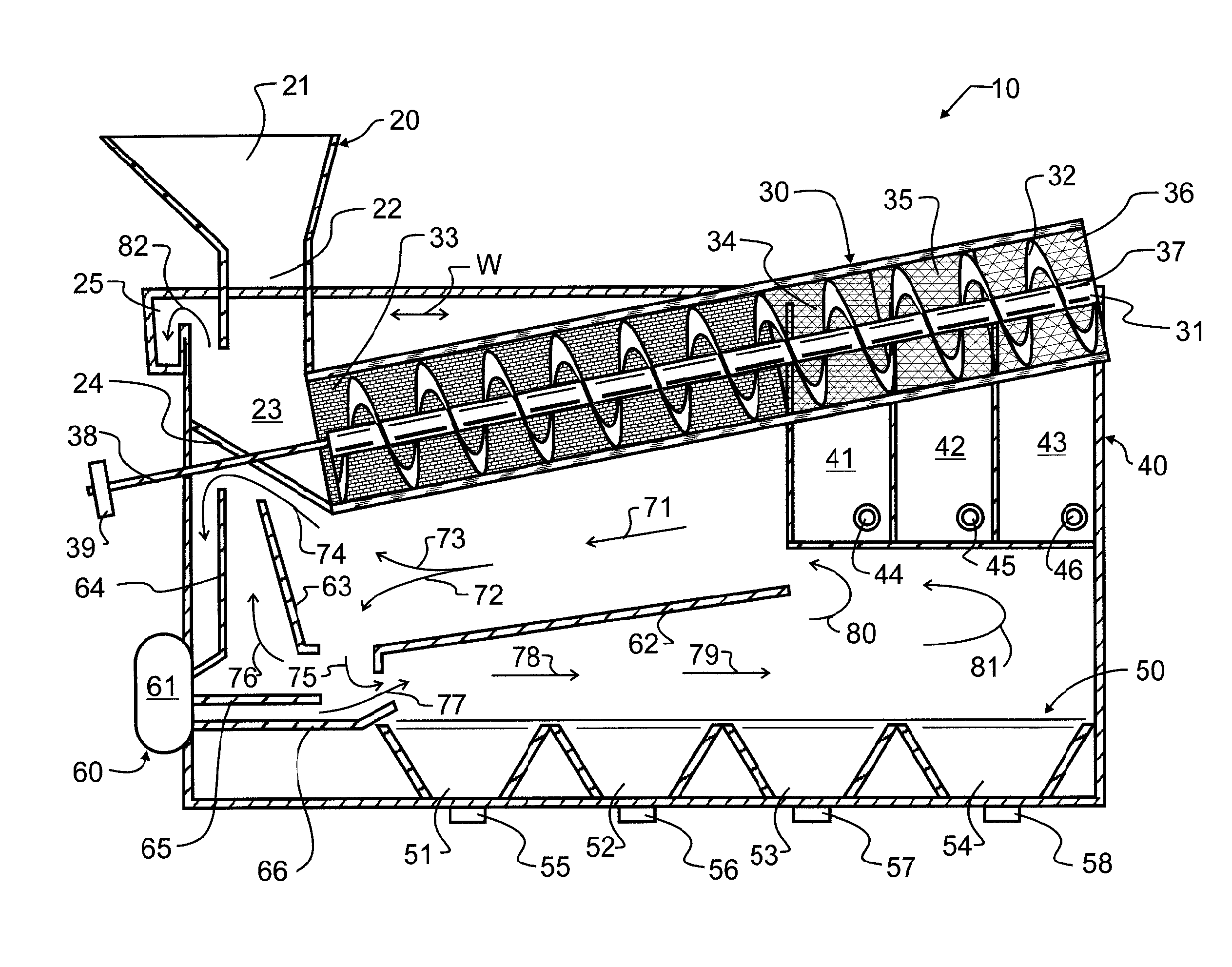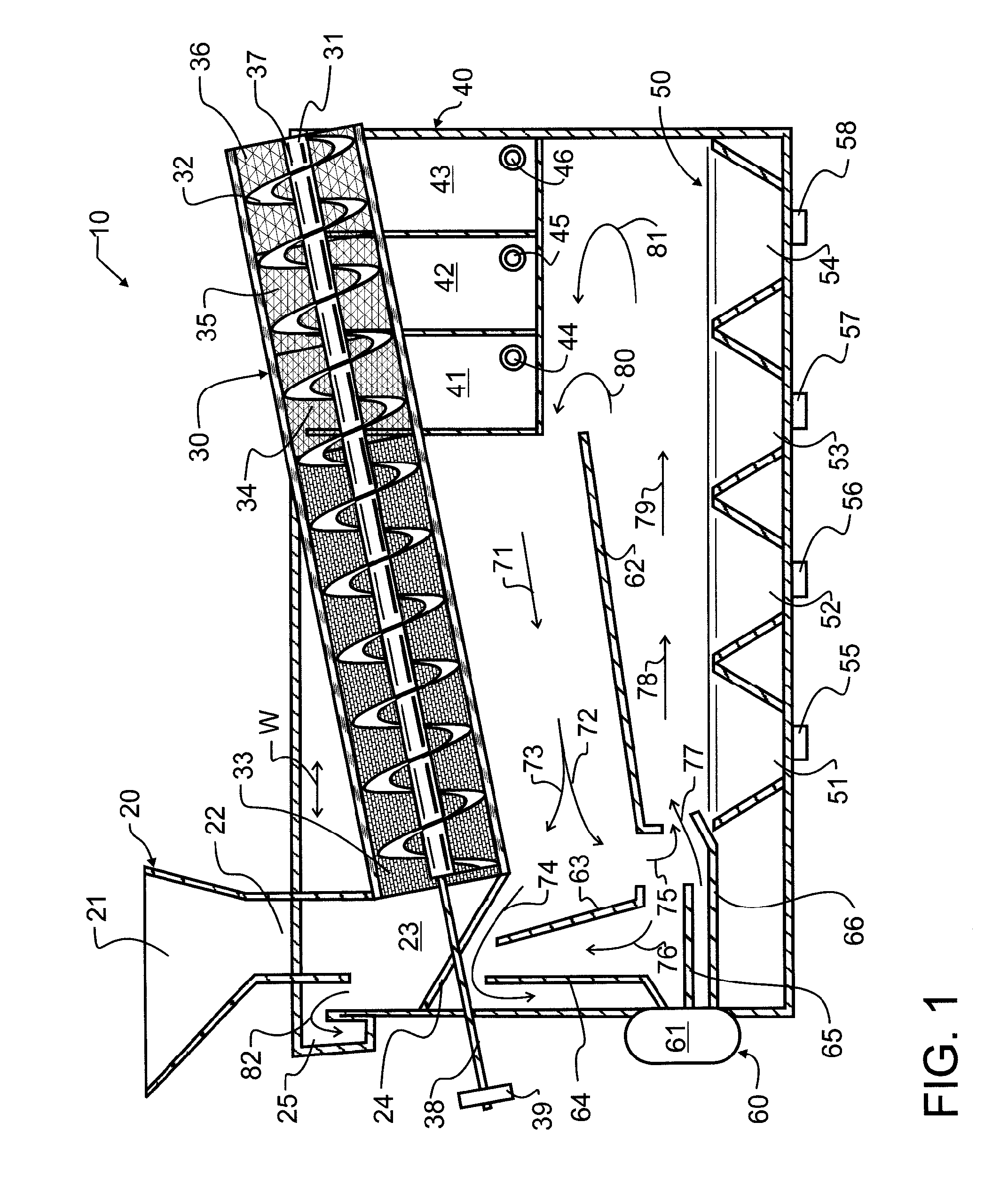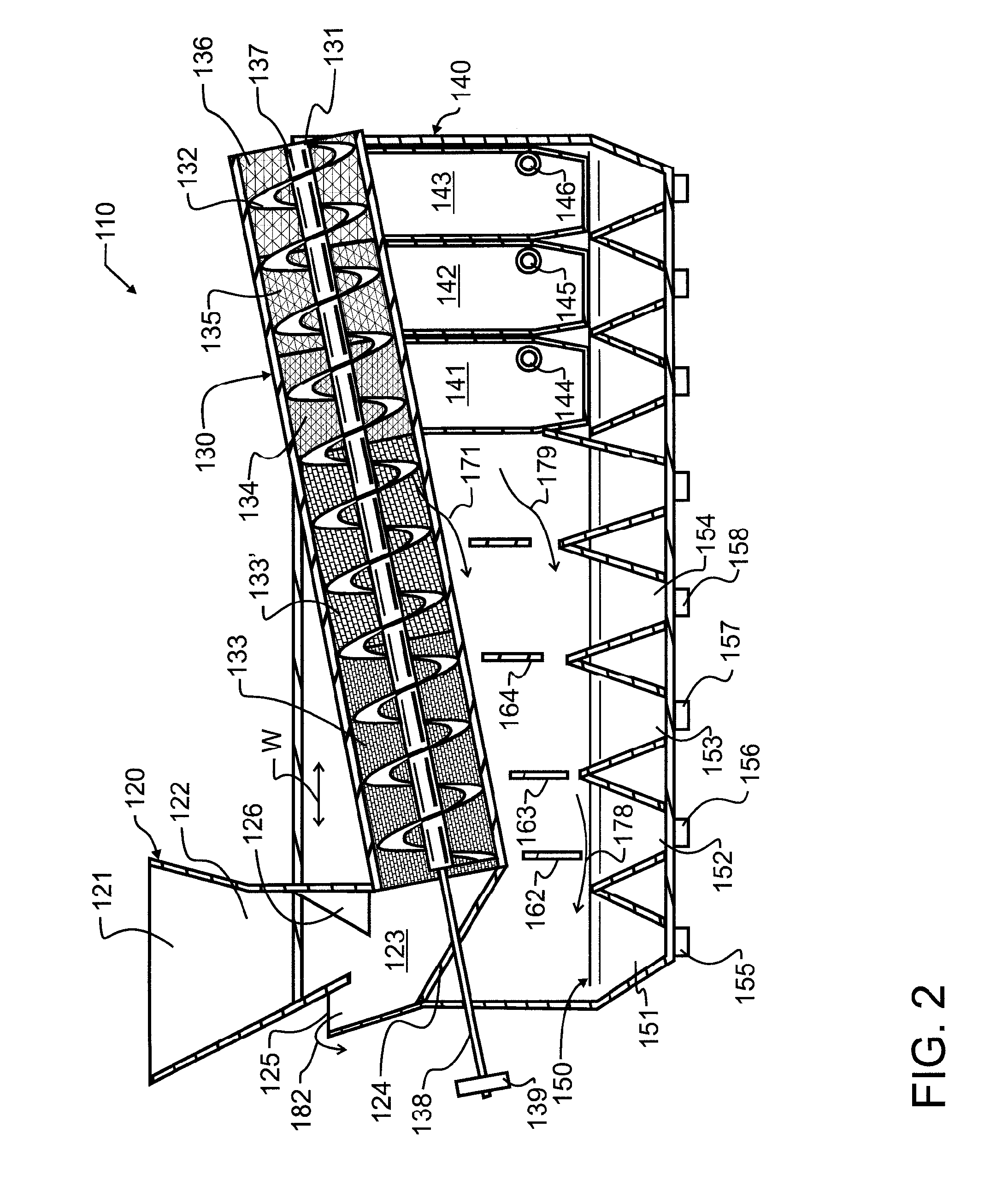Rotary aggregate washing and classification system
a technology of aggregates and classification systems, applied in the direction of solid separation, grading, chemistry apparatus and processes, etc., can solve the problems of affecting the performance of concrete products, shaking or vibrating relatively violently, deleterious alteration of such characteristics, etc., to facilitate the formation of aggregate mixes, reduce shaken or vibrated, and quickly and efficiently classify aggregate mixes
- Summary
- Abstract
- Description
- Claims
- Application Information
AI Technical Summary
Benefits of technology
Problems solved by technology
Method used
Image
Examples
Embodiment Construction
[0020]Manifested in the preferred embodiment of the invention illustrated in FIG. 1, the present invention provides a rotary aggregate washing and classification system 10 which is operative to receive, wash and separate aggregate into useful components and waste. Aggregate, as is known in the industry, may typically include not only rock, gravel and sand but may also contain contaminants such as wood, leaves, paper, plastic, shale, clay, and other undesirable constituents. Most desirably, the undesirable constituents will be separated from the rock, sand and gravel. The rock, gravel and sand will each be further separated into size classifications, for later use as is known in the industry.
[0021]Rotary aggregate washing and classification system 10 is comprised by several main components. These include inlet 20, rotary screen and auger 30, rock receiver 40, sand classifier 50, and water flow control 60. Inlet 20 is operative to receive aggregate in an “as-delivered” state, which ma...
PUM
 Login to View More
Login to View More Abstract
Description
Claims
Application Information
 Login to View More
Login to View More - R&D
- Intellectual Property
- Life Sciences
- Materials
- Tech Scout
- Unparalleled Data Quality
- Higher Quality Content
- 60% Fewer Hallucinations
Browse by: Latest US Patents, China's latest patents, Technical Efficacy Thesaurus, Application Domain, Technology Topic, Popular Technical Reports.
© 2025 PatSnap. All rights reserved.Legal|Privacy policy|Modern Slavery Act Transparency Statement|Sitemap|About US| Contact US: help@patsnap.com



